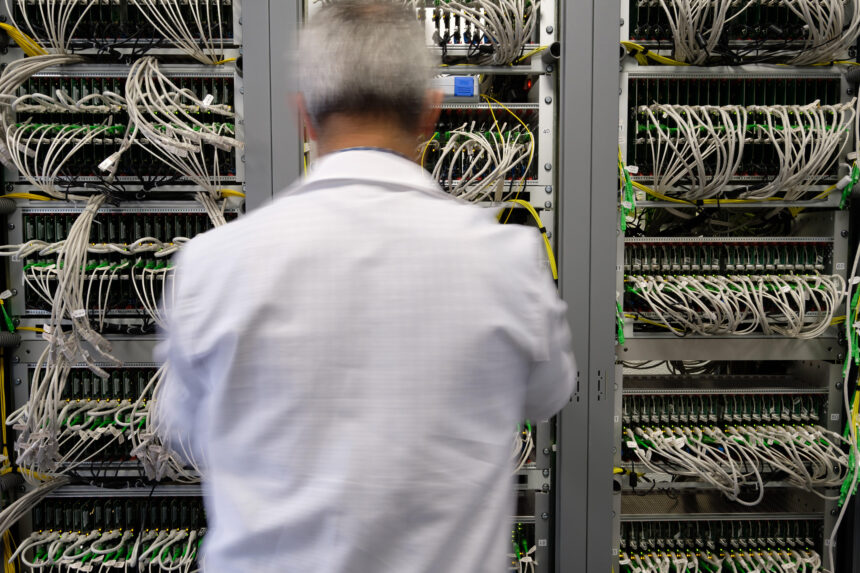Data center governance doesn’t tend to receive as much attention as governance within other facets of the IT industry. In fact, Googling the term is likely to yield more results about ‘data governance’ – an entirely separate concept, than about data center governance.
Yet there’s reason to believe as we head into a new year that data center governance will become a topic of increasing interest. Keep reading for a look at the reasons why, as well as which data center governance trends to expect in 2024.
What Is Data Center Governance?
Data center governance is the practice of managing the physical space and assets inside a data center.
It’s a term that can be easy to misinterpret, given its similarity to other terms such as ‘data governance’. However, unlike governance in other IT contexts, data center governance doesn’t deal primarily with auditing or regulatory compliance.
The goal of data center governance is, in part, to protect data centers against physical security risks that could result from problems like insufficient access controls.
In addition, data center governance helps businesses optimize the performance and efficiency of their facilities by encouraging practices like comprehensive asset tracking and optimal layout of equipment on server room floors.
The Growing Importance of Data Center Governance
Historically, data center governance did not drive frequent conversations in the data center industry. Data center operators sometimes talked about it, but it has not tended to be a core area of concern – perhaps because, unlike other types of governance, data center governance isn’t a requirement for businesses seeking to meet regulatory rules or avoid compliance fines.
Looking ahead, however, governance in data centers is likely to become a more common item of discussion. Data centers have now matured to the point that businesses are increasingly keen to squeeze as much efficiency as possible out of them.
In the past, disorganized data center assets or lack of optimal server room layouts may not have been critical. But today, data center operators face growing pressure to maximize the efficiency of their facilities. Certain regulators are now requiring disclosures about data center emissions, for example, meaning that increasing energy efficiency through effective governance practice has become important for protecting business’s brands and reputations.
At the same time, ever-intensifying cybersecurity threats have made data center operators keener than ever to optimize all types of security, including physical security. Here again, better governance practices are one of the keys to successful outcomes.
Data Center Governance Trends for 2024
Data center operators seeking to address these governance priorities may adopt or scale up the following practices in the new year and beyond:
Comprehensive asset labeling
The first step in optimizing both the security and the efficiency of a data center is to know what’s in it – and we’re not talking just about servers. We’re talking about all assets that make a data center tick, from cables and network switches to HVAC and power systems, and beyond.
To that end, expect an increased focus on labeling inside data centers as one component of data center governance. Policies that require all assets to be labeled help organizations maintain continuous visibility into which types of assets they have to work with and what it takes to use those assets to maximum effect.
Rack organization policies
In many data centers that have been in operation for years, server racks are a bit like medieval streets: They evolved over time without a coherent plan in place. This can lead to inconsistent and inefficient placement of cabinets, as well as suboptimal stacking of servers inside racks.
For businesses seeking to maximize efficiency, taming rack chaos is likely to be another focus of data center governance. Reorganizing racks is relatively simple and cheap, and it can yield surprisingly large dividends in areas like cooling system efficiency.
More biometric controls
Biometric monitoring and access controls inside data centers have come a long way over the past decade. Gone are the days when fingerprint readers were state-of-the-art. Today, technology like retina scanners and facial recognition tools can control access to facilities and monitor movement inside them with unprecedented levels of efficiency and accuracy.
By seizing on this generation of biometric controls, businesses can craft governance processes that enforce stronger physical security protections, while also offering more granular visibility into who does what inside data center facilities.
Extending data center governance beyond the data center
A final facet of governance to watch in the data center space in 2024 is the way that businesses will seek to integrate data center governance practices into broader governance strategies. Today, few data centers are islands; most are just one component of broader IT estates that also include public cloud infrastructure, remote endpoints, and possible assets like IoT devices.
To optimize governance, businesses with sprawling IT estates should seek to establish asset management and security policies that are as consistent as possible across all their physical and virtual spaces. They might do this by using existing data center governance rules as the basis for governance in other contexts, or by rewriting governance policies for data centers to reflect the practices that they already have in place elsewhere in their IT estates.
Conclusion
Data center governance may not drive as many headlines in 2024 as trends like AI and quantum computing, but it’s poised nonetheless to be an increasingly important aspect of data center operations in the new year.
Industry observers should keep an eye on the way that businesses evolve governance practices to improve security, energy efficiency, IT asset management, and more.




